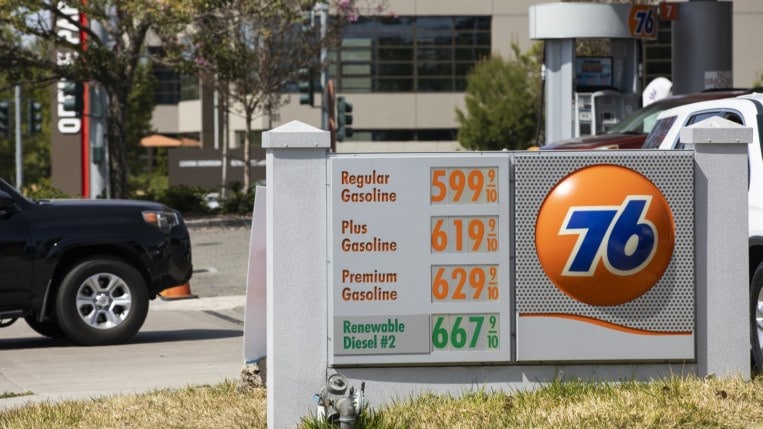
This morning, according to AAA, Americans are paying an average of $4.43 per gallon. At the current growth rate, $4.50 could be in reach next week.
What’s Driving Prices
The price of oil on the global market is the largest factor driving the price of gasoline on the domestic market. Russia’s invasion of Ukraine, and the sanctions many Western countries placed on it in response, drove oil prices higher.
Most measures show a barrel of oil trading at above $100 this week, but analysts say some relief is on the way.
China has enacted new COVID-19-related lockdowns in several cities, decreasing global demand. That is expected to drive oil prices down. The price at the pump usually reacts about a week after oil prices plunge.
Related: How Much do Rising Gas Prices Actually Cost You?
“I think the consumer will get a bit of a break here,” said Tom Kloza, global head of energy analysis at Oil Price Information Service.
But Kloza doesn’t see long-term relief coming. “Just watch out for July and August,” he warns. “I think the consumer will drive this summer whether it’s $4 a gallon or $6 a gallon.”
Production Probably Won’t Go Up
You might expect producers to rush to drill more amid public demand to bring down prices. It’s not likely.
In fact, the Department of the Interior yesterday canceled a major oil and gas lease auction that would have led to drilling in Alaska’s Cook Inlet. Why? Lack of bidders. A press release announcing the decision cited a “lack of industry interest in leasing in the area.”
Though critics jumped on the move, oil analysts say the leases are irrelevant to current pump prices. Patrick De Haan, GasBuddy’s head of petroleum analysis, tweeted that the move “means literally nothing today. It would have taken half a decade or more to bring any of that potential oil to market.”
“Oil and gas companies do not want to drill more,” Pavel Molchanov, an analyst at Raymond James, told CNN Business.
“They are under pressure from the financial community to pay more dividends, to do more share buybacks, instead of the proverbial ‘drill baby drill,’ which is the way they would have done things 10 years ago. Corporate strategy has fundamentally changed.”
When Exxon Mobil announced record quarterly profits last month, it set aside $30 billion to repurchase its own stock shares to drive up stock prices and just $21 billion for all new capital investments, including new oil exploration.
The Only Sure Thing: Driving Less
So, what can bring down the price at the pump?
One thing – driving less. If supply won’t change, demand must.
There are early signs it may. The U.S. Energy Information Administration reports that Americans burned 8.702 million barrels of gasoline in the week ending May 6 (the most recent for which data are available). That’s 1.7% less than the week before.
For ways you can cut your gasoline usage:
How Hypermiling Saves You Money
How to Get Better Fuel Economy Out of Your Existing Car







